1. Xylitol
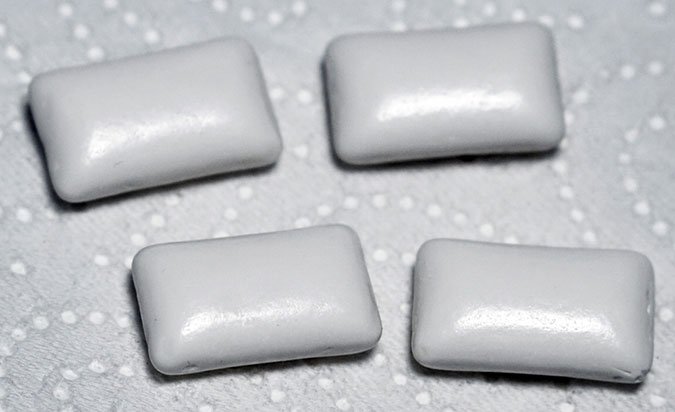
Tila Monto | Wiki Creative Commons
Xylitol is a low-calorie sweetener that is derived from birch trees. It was first created in Finland during World War II, when sugar supplies were interrupted. Xylitol has a lot of dental benefits for humans, including the prevention of cavities, dental plaque, dry mouth, and bad breath. It also has the unique ability to remineralize tooth enamel. You can find xylitol in candy, nasal sprays, mouthwash, gum and as an artificial sweetener. Dogs, however, should not consume xylitol. In dogs, xylitol causes a rapid drop in blood sugar. This can cause seizures in dogs, which sometimes lead to death. More about xylitol and dogs at Dogster.com.
2. Chocolate
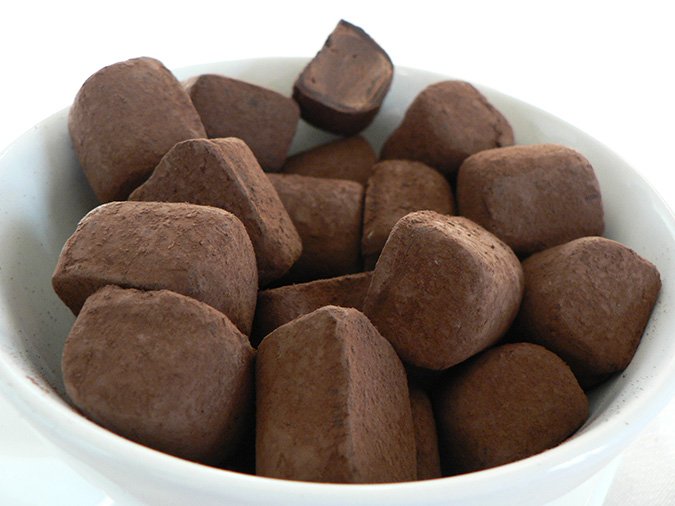
Nieuw | Wiki Creative Commons
While the rule that the darker the chocolate, the healthier it is may be true for people, the opposite is true for dogs. Chocolate’s problem ingredients are theobromine and caffeine, which dogs absorb through their gastrointestinal tracts too fast and put damaging stress on the liver. In dark chocolate, these naturally occuring ingredients are more concentrated and are likely to lead to serious problems, death included.
Note: Cocoa powder, in some cases, can be as concentrated as dark or baking chocolate. Even cocoa bean shell mulch, a popular garden product, can be toxic when swallowed by chocolate-craving chow hounds.
Get more details on why chocolate is bad for dogs at Dogster.com.
3. Grapes and Raisins

Fotoos Van Robin | Wiki Creative Commons
The toxicity of grapes to dogs is still not really understood by scientists. Reactions vary from dog to dog. Some dogs can eat grapes regularly and never have problems. Accidentally eating a few grapes probably won’t affect a dog of any size. But when ingested in siginificant quantities – as little as 2.5 ounces – this fruit can cause kidney failure.
Find out more about grapes and dogs here.
4. Onions
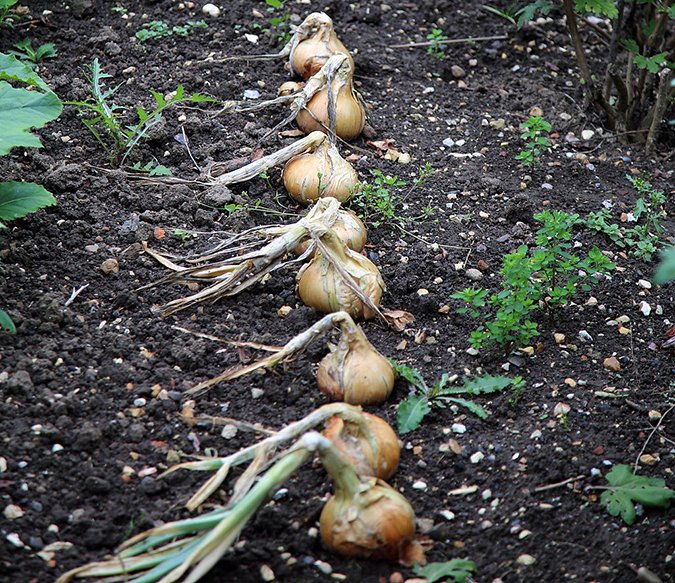
Acabashi | Wiki Creative Commons
Onions and their cousins, garlic, are rich in a compound called thiosulphate, which is toxic to dogs. Being much more thiosulphate-potent than garlic, onions pose a threat to dogs if they eat just a single serving – about one good-sized onion. Thiosulphate causes hemolytic anemia (“Heinz factor”) in dogs, a condition that bursts red blood cells.
Symptoms of hemolytic anemia can develop in a range of time – generally within a few hours, but can be after a few days. Signs of hemolytic anemia include depression, weakness, no interest in food, vomiting and diarrhea. In a progressed case, the dog’s urine will become red from damaged blood cells. As oxygen-carrying red blood cells die off and leave the dog’s body, the dog becomes suffocated.
5. Garlic
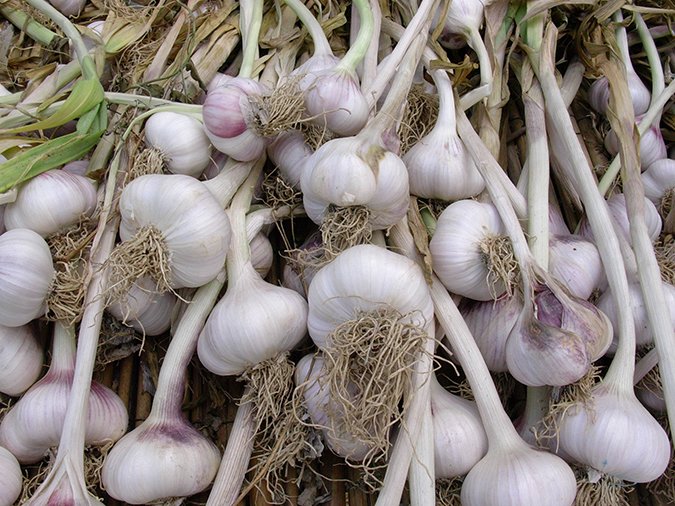
Francesco Perito | Wiki Creative Commons
Garlic is a tricky one because when used topically and sprinkled over food, it is great for dogs. It fights ear infections, internal infections, boosts immune systems and lowers blood sugar. But it also contains thiosulphate.
Many holistic veterinarians and health care experts believe that feeding doses up to 1 small clove of garlic per 20 pounds of body weight per day are not likely to pose problems for dogs. When uses topically for wounds or ear infections, it is harmless. If your dog were to eat a whole head of garlic, on the other hand, see Onions above.
6. Macadamia Nuts

Carl Davies | CSIRO
The good news is that we have no documented cases of macadamia nut poisoning that has led to death. It alleviates after it passes through the dog – in around 12 to 36 hours. The bad news is symptoms are dramatic. Hind-end weakness, lethargy, depression, vomiting, and diarrhea all come after eating as little as 1 gram of macadamia nuts per pound of a dog’s body weight. What about other nuts? Dogster covers the subject.
7. Unbaked Yeast
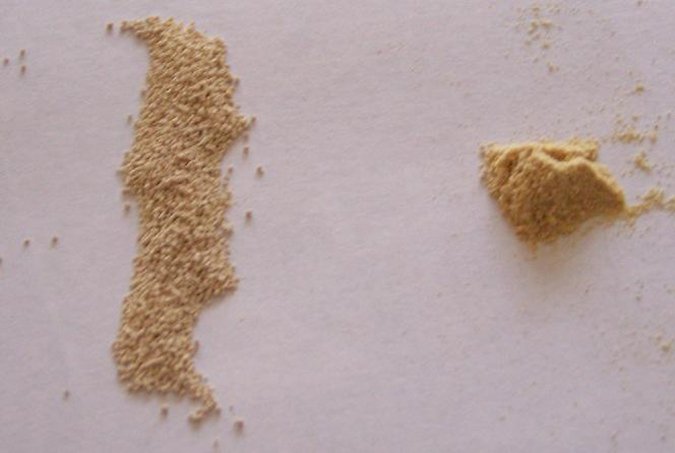
Wiki Creative Commons
Raw yeast cells multiply too quickly for dogs’ gastrointestinal tracts. When dogs swallow unbaked dough, it can continue to rise, creating a risk of blockage or even rupture of the dog’s GI tract. In instances when a very large amount of yeast is eaten, the yeast also ferments inside the dog, producing alcohol, in which case alcohol poisoning can occur.
If you bake breads from scratch, or have yeast in your kitchen for any other reason, remember to keep it – rising dough in particular – in a safe, dog-proof location. And if your dog swallows any, call your veterinarian immediately.
8. Zinc

Three-Quarter-Ten | Wiki Creative Commons
Dietary zinc is an important mineral, but dogs don’t need very much at all – about 80 to 120 parts per million on a dry weight basis. Dogs can suffer acute zinc toxicity through eating pennies, topical medications like zinc oxide, and other zinc-coated objects around the house. Things like these contain large amounts of zinc – much more than anyone should ingest. Zinc toxicity in dogs can lead to gastroenteritis, hemolytic anemia, inflammation, and possible necrosis (destruction of tissue) of the liver, kidney, and pancreas.
Zinc toxicosis is often confused with acute gastrointestinal episodes because the dog may be rejecting food or lethargic, while having vomiting and diarrhea episodes, either of which may be bloody. If the object swallowed is too small, it might not be visible in X-rays. Also depending on size and consistency, you may not be able to tell whether the dog vomited the object or passed it in feces. Zinc-medicated ointments and shampoos aren’t visible in X-rays the way pennies are.
9. Vitamin D Ointments
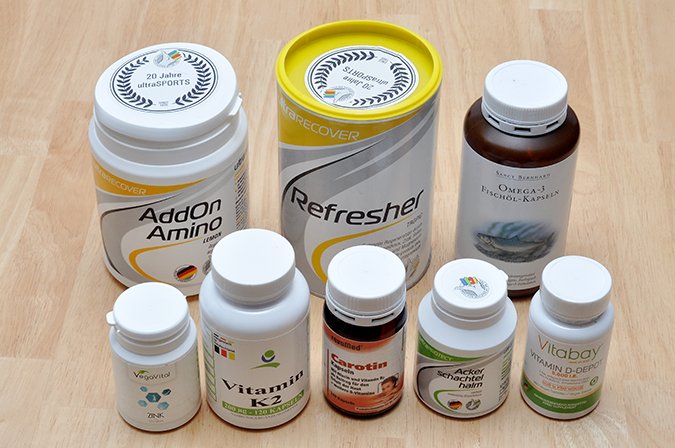
Marco Verch
Not just ointments, but Omega-3 supplements, multivitamins, and other topical creams are full of Vitamin D, which, when ingested in toxic amounts, cause a rapid buildup of calcium and phosphorous in dogs’ bodies. Too much calcium and phosphorous lead to the mineralization (hardening) of internal tissue, most often in the kidneys, heart or gastrointestinal tract. At best this causes kidney stones; at worst it brings acute kidney failure. If your dog has eaten any kind of topical ointment, call your animal hospital and Poison Control.
10. Wild Mushrooms

Tila Monto | Wiki Creative Commons
0)]
In the U.S., toxic mushrooms are divided into categories based on the severity and nature of poisons they contain. Mushrooms in the Amanita family, the most dangerous category, for example, will cause the thorough destruction of cells in the liver and kidneys, often before any visible symptoms arise. But the syndrome-inducing portfolio of various fungi is diverse, and it is worth it to know what mushrooms are prevalent in your area. Inspect your property for mushrooms in the spring and fall, and keep a particularly curious dog leashed on walks through nature.
11. Nutritional Supplements

Tila Monto | Wiki Creative Commons
1)]
This one relates to #9. Any supplement or health product marketed for humans was not manufactured with dogs in mind. Fat soluble vitamin capsules – A, D, E – are toxic to dogs because their bodies do not process these substances in the same way and because dogs are a lot smaller than humans. The 500mg pill of Vitamin D, for example, has a lot more room to spread in a 165 lb. human than in a 35 lb. dog.
12. Prescription and OTC Drugs

Tila Monto | Wiki Creative Commons
2)]
Sure, some veterinarians prescribe Alprazolam (generic Xanax) or Tramadol to dogs with severe anxiety. The effects of these human benzodiazepines on dogs is more or less the same. What about all the other drugs sitting around an average household? Some people will say NSAID pain killers are fine for dogs, but Aleve and acetaminophen drugs like Tylenol have sent countless dogs to the hospital. Antidepressants like Prozac can cause serious sedation and seizures. Amphetamines like Ritalin cause circulatory collapse, heart arrhythmias, and seizures. Opiates will do what they do to any living thing who’s overdosed: shut down the respiratory system and the heart.
13. Toothpaste

Tila Monto | Wiki Creative Commons
3)]
A common ingredient in toothpaste is xylitol, but there are other dangers presented here for dogs. As children, we were probably all warned about swallowing the toothpaste when we brushed our teeth. The fluoride, we were told, was good for teeth but toxic to our stomachs. It is no different in dogs, except they never get the memo to not eat it. They just see us putting it in our mouths everyday. Fluoride poisioning can be fatal to dogs if it’s severe, attacking the stomach and intestines.
Always keep potentially harmful items in closets, drawers, or cabinets that your dog can’t open, not on a table or countertop or in a bag left on the floor. Make sure your kids understand these rules. And always supervise your dog’s play indoors and out.






